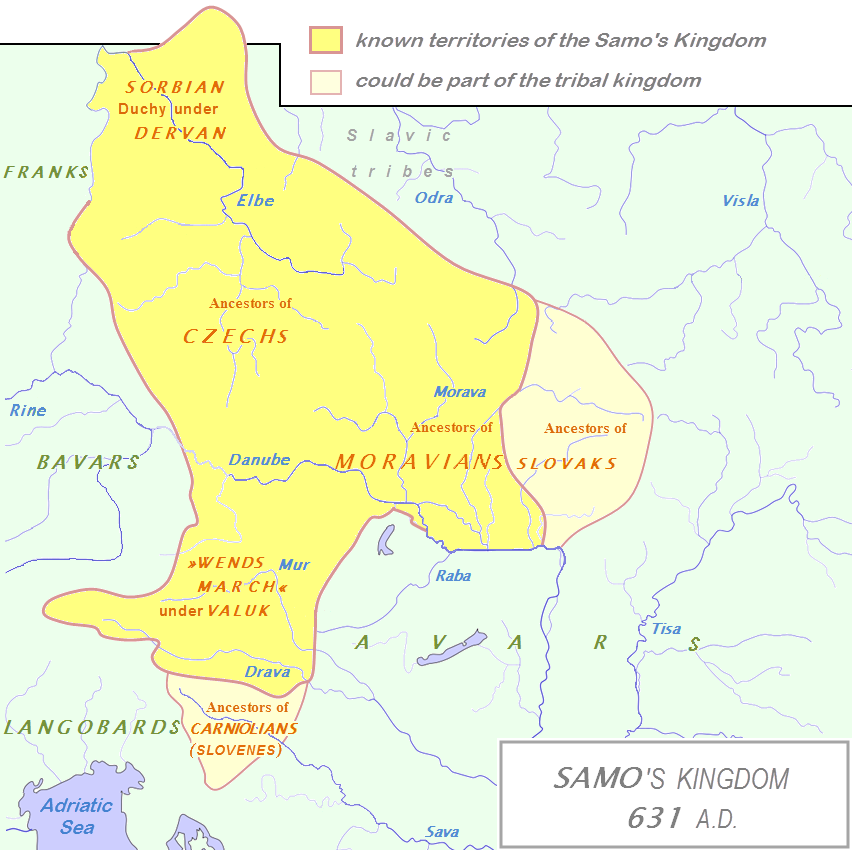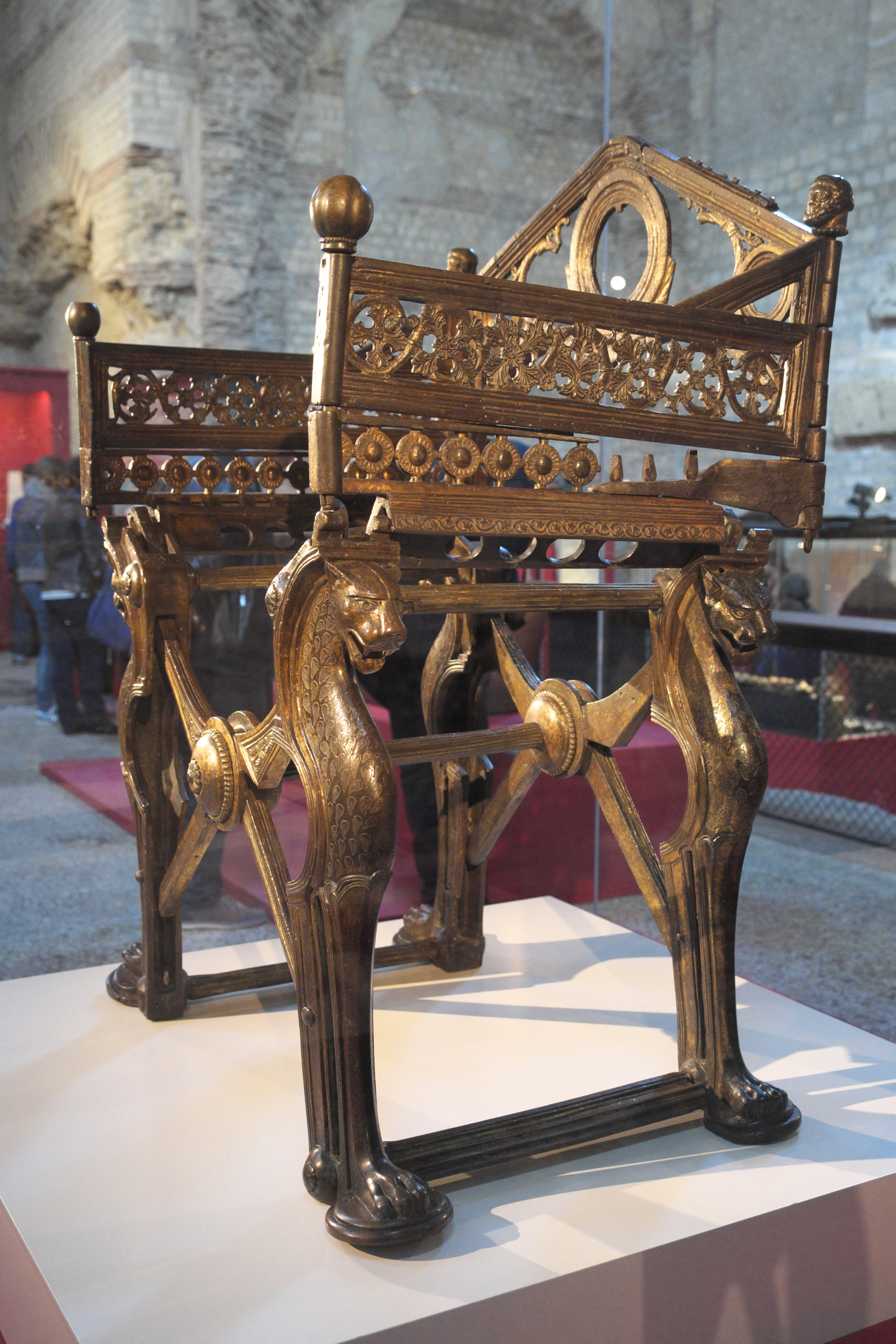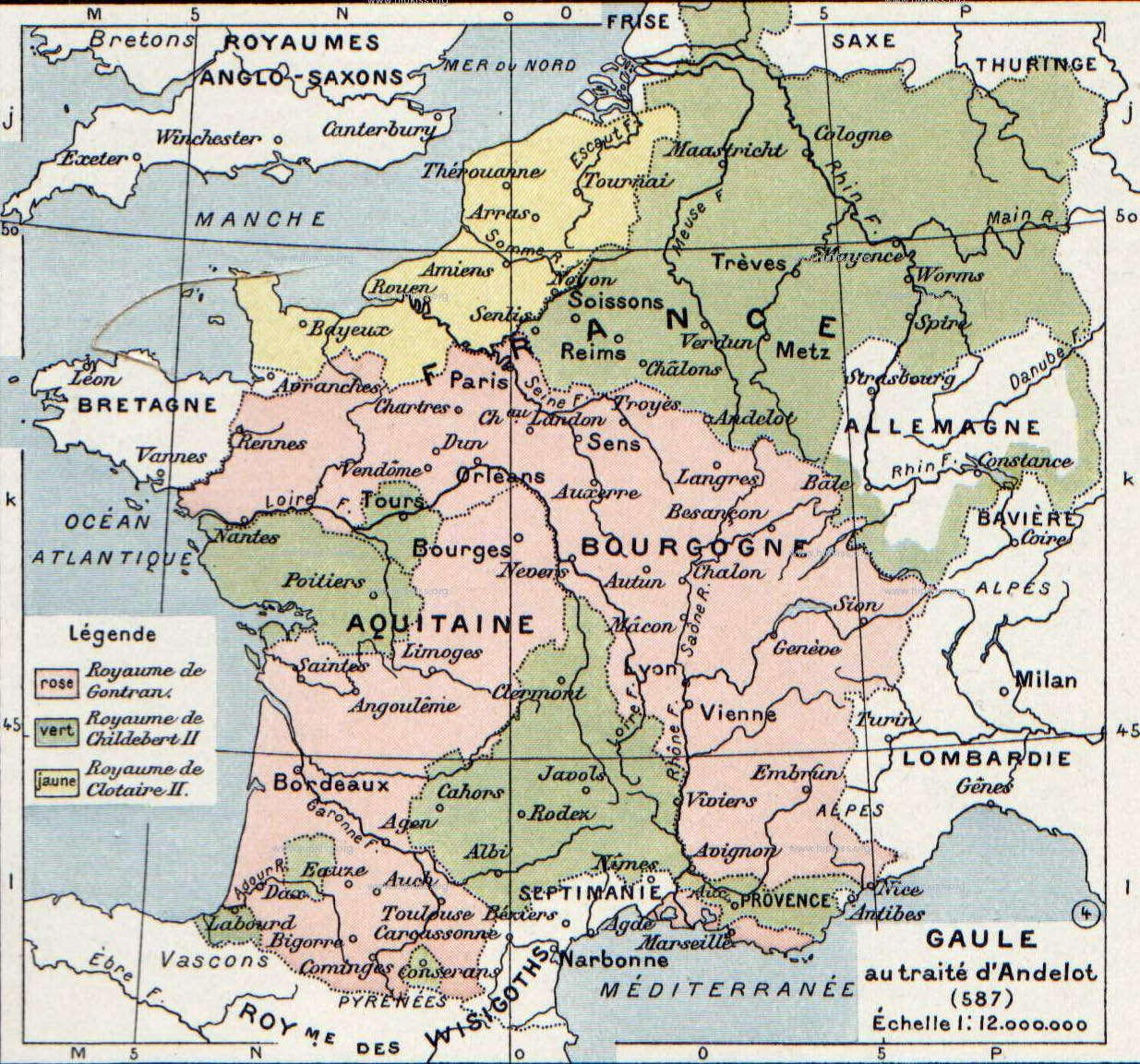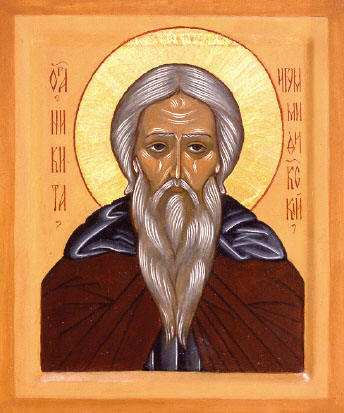|
623
Year 623 (Roman numerals, DCXXIII) was a common year starting on Saturday (link will display the full calendar) of the Julian calendar. The denomination 623 for this year has been used since the early medieval period, when the Anno Domini calendar era became the prevalent method in Europe for naming years. Events By place Byzantine Empire * Byzantine–Sassanid War of 602–628, Byzantine–Sassanid War: Emperor Heraclius invades Medieval Armenia, Armenia, leaving his son Constantine III (Byzantine emperor), Constantine (age 11) and co-regent Bonus (patrician), Bonus to defend Constantinople against the Sassanid Empire, Persians still at Chalcedon (modern Turkey). He sails with 5,000 reinforcements to join the Byzantine army at Trabzon, Trapezus. Raising additional forces in Pontus (region), Pontus, Heraclius strikes through the mountains of Armenia and the northern sub-Caucasus, Caucasian principalities. He plunders Medes, Media (Azerbaijan), and avoids the Persian arm ... [...More Info...] [...Related Items...] OR: [Wikipedia] [Google] [Baidu] |
Dagobert I
Dagobert I ( la, Dagobertus; 605/603 – 19 January 639 AD) was the king of Austrasia (623–634), king of all the Franks (629–634), and king of Neustria and Burgundy (629–639). He has been described as the last king of the Merovingian dynasty to wield any real royal power. Dagobert was the first of the Frankish kings to be buried in the royal tombs at Saint Denis Basilica. Rule in Austrasia Dagobert was the eldest son of Chlothar II and Haldetrude (575–604) and the grandson of Fredegund. Chlothar had reigned alone over all the Franks since 613. In 622, Chlothar made Dagobert king of Austrasia, almost certainly to bind the Austrasian nobility to the ruling Franks. As a child, Dagobert lived under the care of the Carolingian dynasty forebears and Austrasian magnates, Arnulf of Metz and Pepin of Landen. Chlothar attempted to manage the unstable alliances he had with other noble families throughout much of Dagobert's reign. When Chlothar granted Austrasia to Dagobert, he ... [...More Info...] [...Related Items...] OR: [Wikipedia] [Google] [Baidu] |
Pepin Of Landen
Pepin I (also Peppin, Pipin, or Pippin) of Landen (c. 580 – 27 February 640), also called the Elder or the Old, was the Mayor of the palace of Austrasia under the Merovingian King Dagobert I from 623 to 629. He was also the Mayor for Sigebert III from 639 until his death. Life Pepin's father was named Carloman by the ''Chronicle of Fredegar,'' the chief source for his life. His byname comes from his probable birthplace: Landen, modern Belgium. However, according to Godefroid Kurth, it was only in the twelfth century that the chroniclers of Brabant began to associate him with that locality.Kurth, Godefroid. "The Franks." The Catholic Encyclopedia Vol. 6. New York: Robert Appleton Company, 1909. 21 March 2016 He is sometimes called Pepin I and his other nicknames (Elder and Old) come from h ... [...More Info...] [...Related Items...] OR: [Wikipedia] [Google] [Baidu] |
Austrasia
Austrasia was a territory which formed the north-eastern section of the Merovingian Kingdom of the Franks during the 6th to 8th centuries. It was centred on the Meuse, Middle Rhine and the Moselle rivers, and was the original territory of the Franks, including both the so-called Salians and Rhineland Franks, which Clovis I conquered after first taking control of the bordering part of Roman Gaul, now northern France, which is sometimes described in this period as Neustria. In 561, Austrasia became a separate kingdom within the Frankish kingdom and was ruled by Sigebert I. In the 7th and 8th centuries it was the powerbase from which the Carolingians, originally mayors of the palace of Austrasia, took over the rule of all Franks, all of Gaul, most of Germany, and northern Italy. After this period of unification, the now larger Frankish empire was once again divided between eastern and western sub-kingdoms, with the new version of the eastern kingdom eventually becoming the foun ... [...More Info...] [...Related Items...] OR: [Wikipedia] [Google] [Baidu] |
Samo
Samo (–) founded the first recorded political union of Slavic tribes, known as Samo's Empire (''realm'', ''kingdom'', or ''tribal union''), stretching from Silesia to present-day Slovakia, ruling from 623 until his death in 658. According to Fredegarius, the only contemporary source, Samo was a Frankish merchant who unified several Slavic tribes against robber raids and violence by nearby settled Avars, showing such bravery and command skills in battle that he was elected as the "Slavic king" ( la, rex Sclavorum). In 631, Samo successfully defended his realm against the Frankish Kingdom in the three-day Battle of Wogastisburg. Reign The dates for Samo's rule are based on Fredegar, who says that he went to the Slavs in the fortieth year of Chlothar II (i.e., 623–24) and reigned for thirty five years.Curta, 109. The interpretation that places the start of Samo's reign in the year of Fredegar's arrival has been questioned on the basis that the Wends would have most likel ... [...More Info...] [...Related Items...] OR: [Wikipedia] [Google] [Baidu] |
Turkey
Turkey ( tr, Türkiye ), officially the Republic of Türkiye ( tr, Türkiye Cumhuriyeti, links=no ), is a list of transcontinental countries, transcontinental country located mainly on the Anatolia, Anatolian Peninsula in Western Asia, with a East Thrace, small portion on the Balkans, Balkan Peninsula in Southeast Europe. It shares borders with the Black Sea to the north; Georgia (country), Georgia to the northeast; Armenia, Azerbaijan, and Iran to the east; Iraq to the southeast; Syria and the Mediterranean Sea to the south; the Aegean Sea to the west; and Greece and Bulgaria to the northwest. Cyprus is located off the south coast. Turkish people, Turks form the vast majority of the nation's population and Kurds are the largest minority. Ankara is Turkey's capital, while Istanbul is its list of largest cities and towns in Turkey, largest city and financial centre. One of the world's earliest permanently Settler, settled regions, present-day Turkey was home to important Neol ... [...More Info...] [...Related Items...] OR: [Wikipedia] [Google] [Baidu] |
Clothar II
Chlothar II, sometime called "the Young" ( French: le Jeune), (May/June 584 – 18 October 629), was king of Neustria and king of the Franks, and the son of Chilperic I and his third wife, Fredegund. He started his reign as an infant under the regency of his mother, who was in an uneasy alliance with Chlothar's uncle King Guntram of Burgundy, who died in 592. Chlothar took power upon the death of his mother in 597; though rich, Neustria was one of the smallest portions of Francia. He continued his mother's feud with Queen Brunhilda with equal viciousness and bloodshed, finally achieving her execution in an especially brutal manner in 613, after winning the battle that enabled Chlothar to unite Francia under his rule. Like his father, he built up his territories by seizing lands after the deaths of other kings. His reign was long by contemporary standards, but saw the continuing erosion of royal power to the French nobility and the church against a backdrop of feuding among the ... [...More Info...] [...Related Items...] OR: [Wikipedia] [Google] [Baidu] |
Nobility
Nobility is a social class found in many societies that have an aristocracy (class), aristocracy. It is normally ranked immediately below Royal family, royalty. Nobility has often been an Estates of the realm, estate of the realm with many exclusive functions and characteristics. The characteristics associated with nobility may constitute substantial advantages over or relative to non-nobles or simply formal functions (e.g., Order of precedence, precedence), and vary by country and by era. Membership in the nobility, including rights and responsibilities, is typically Hereditary title, hereditary and Patrilinearity, patrilineal. Membership in the nobility has historically been granted by a monarch or government, and acquisition of sufficient power, wealth, ownerships, or royal favour has occasionally enabled commoners to ascend into the nobility. There are often a variety of ranks within the noble class. Legal recognition of nobility has been much more common in monarchies, ... [...More Info...] [...Related Items...] OR: [Wikipedia] [Google] [Baidu] |
Metz
Metz ( , , lat, Divodurum Mediomatricorum, then ) is a city in northeast France located at the confluence of the Moselle and the Seille rivers. Metz is the prefecture of the Moselle department and the seat of the parliament of the Grand Est region. Located near the tripoint along the junction of France, Germany and Luxembourg,Says J.M. (2010) La Moselle, une rivière européenne. Eds. Serpenoise. the city forms a central place of the European Greater Region and the SaarLorLux euroregion. Metz has a rich 3,000-year history,Bour R. (2007) Histoire de Metz, nouvelle édition. Eds. Serpenoise. having variously been a Celtic ''oppidum'', an important Gallo-Roman city,Vigneron B. (1986) Metz antique: Divodurum Mediomatricorum. Eds. Maisonneuve. the Merovingian capital of Austrasia,Huguenin A. (2011) Histoire du royaume mérovingien d'Austrasie. Eds. des Paraiges. pp. 134,275 the birthplace of the Carolingian dynasty,Settipani C. (1989) Les ancêtres de Charlemagne. Ed. ... [...More Info...] [...Related Items...] OR: [Wikipedia] [Google] [Baidu] |
Roman Numerals
Roman numerals are a numeral system that originated in ancient Rome and remained the usual way of writing numbers throughout Europe well into the Late Middle Ages. Numbers are written with combinations of letters from the Latin alphabet, each letter with a fixed integer value, modern style uses only these seven: The use of Roman numerals continued long after the decline of the Roman Empire. From the 14th century on, Roman numerals began to be replaced by Arabic numerals; however, this process was gradual, and the use of Roman numerals persists in some applications to this day. One place they are often seen is on clock faces. For instance, on the clock of Big Ben (designed in 1852), the hours from 1 to 12 are written as: The notations and can be read as "one less than five" (4) and "one less than ten" (9), although there is a tradition favouring representation of "4" as "" on Roman numeral clocks. Other common uses include year numbers on monuments and buildings and ... [...More Info...] [...Related Items...] OR: [Wikipedia] [Google] [Baidu] |
Chalcedon
Chalcedon ( or ; , sometimes transliterated as ''Chalkedon'') was an ancient maritime town of Bithynia, in Asia Minor. It was located almost directly opposite Byzantium, south of Scutari (modern Üsküdar) and it is now a district of the city of Istanbul named Kadıköy. The name ''Chalcedon'' is a variant of Calchedon, found on all the coins of the town as well as in manuscripts of Herodotus's '' Histories'', Xenophon's '' Hellenica'', Arrian's ''Anabasis'', and other works. Except for the Maiden's Tower, almost no above-ground vestiges of the ancient city survive in Kadıköy today; artifacts uncovered at Altıyol and other excavation sites are on display at the Istanbul Archaeological Museum. The site of Chalcedon is located on a small peninsula on the north coast of the Sea of Marmara, near the mouth of the Bosphorus. A stream, called the Chalcis or Chalcedon in antiquity William Smith, LLD, ed. (1854). '' Dictionary of Greek and Roman Geography''"Chalcedon" and now kno ... [...More Info...] [...Related Items...] OR: [Wikipedia] [Google] [Baidu] |
Franks
The Franks ( la, Franci or ) were a group of Germanic peoples whose name was first mentioned in 3rd-century Roman sources, and associated with tribes between the Lower Rhine and the Ems River, on the edge of the Roman Empire.H. Schutz: Tools, Weapons and Ornaments: Germanic Material Culture in Pre-Carolingian Central Europe, 400-750. BRILL, 2001, p.42. Later the term was associated with Romanized Germanic dynasties within the collapsing Western Roman Empire, who eventually commanded the whole region between the rivers Loire and Rhine. They imposed power over many other post-Roman kingdoms and Germanic peoples. Beginning with Charlemagne in 800, Frankish rulers were given recognition by the Catholic Church as successors to the old rulers of the Western Roman Empire. Although the Frankish name does not appear until the 3rd century, at least some of the original Frankish tribes had long been known to the Romans under their own names, both as allies providing soldiers, and as e ... [...More Info...] [...Related Items...] OR: [Wikipedia] [Google] [Baidu] |
Heraclius
Heraclius ( grc-gre, Ἡράκλειος, Hērákleios; c. 575 – 11 February 641), was List of Byzantine emperors, Eastern Roman emperor from 610 to 641. His rise to power began in 608, when he and his father, Heraclius the Elder, the Exarchate of Africa, exarch of Africa, led a revolt against the unpopular usurper Phocas. Heraclius's reign was marked by several military campaigns. The year Heraclius came to power, the empire was threatened on multiple frontiers. Heraclius immediately took charge of the Byzantine–Sasanian War of 602–628. The first battles of the campaign ended in defeat for the Byzantines; the Persian army fought their way to the Bosphorus but Constantinople was protected by impenetrable walls and a strong navy, and Heraclius was able to avoid total defeat. Soon after, he initiated reforms to rebuild and strengthen the military. Heraclius drove the Persians out of Asia Minor and pushed deep into their territory, defeating them decisively in 627 at the ... [...More Info...] [...Related Items...] OR: [Wikipedia] [Google] [Baidu] |








